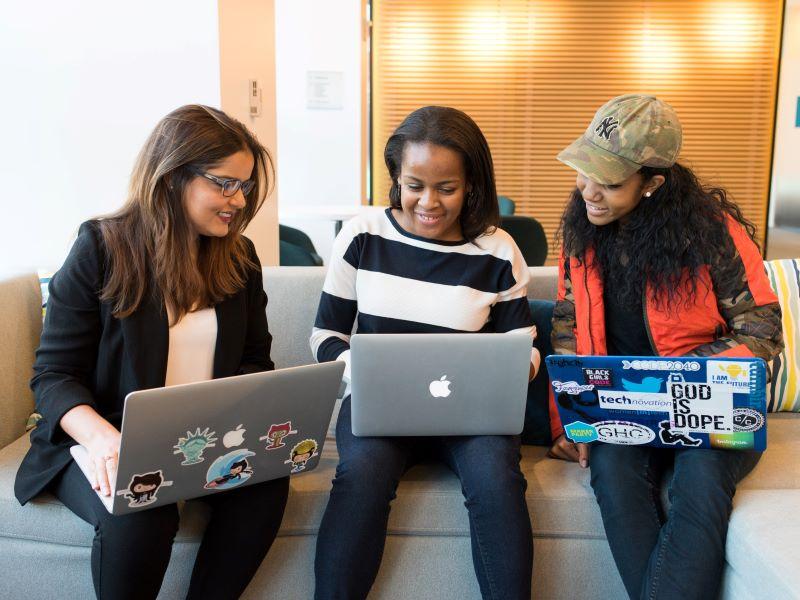
Designing online learning to fuel a more diverse workplace
Anthony Tattersall outlines online course design strategies that support greater diversity of learners and fuel a more varied workplace

You may also like
Popular resources
Many educators were new to online pedagogical tools when the pandemic hit. As a result, students at risk of increased vulnerability were . This sparked concerns that after years of work, would fall behind, impacting student demographics and ultimately the make-up of many industry sectors.
But well-established and respected online programmes have seen thousands of students enrol from dozens of countries around the world, suggesting that it is possible to create online courses which meet the needs of diverse groups across many nations.
So, how can online learning resources be designed to attract and support a greater diversity of students and so, in turn, lead to greater diversity in the workplace?
<������Ƶ>Championing women in the workplaceIn 2019, female full-time employees in the UK’s private sector earned on average less than men in equivalent positions. Despite equality legislation and recognition of the importance of diversity, inequality persists. Education can play a crucial role in closing this gap, by feeding industry skilled female graduates in areas where they have been underrepresented, such as .
There are many ways of doing this. Some of our partners ensure visible female representation in course curricula to encourage more female students to join. Content in Google IT courses, for example, is taught by Googlers from a variety of backgrounds and contains personal stories from their start in IT support. In its first year, Google’s IT support professional certificate saw more than 50,000 learners enrol with 60 per cent identifying as female, black, Latino or a veteran. Teaching from inspiring female mentors can provide women with a view of what their future career may look like. This approach can be used to encourage students from many underrepresented groups to enter courses or industries where they might feel like an outsider.
Designing “safer spaces” of interaction is important. Women are two and a half times to ask questions in seminars, according to University of Cambridge research. Making resources and tuition support available in different ways, such as video office hours or integrations with apps that track conversations, offers “gated” space for learners to freely and safely communicate and collaborate. University of Illinois professor Larry DeBrock, who teaches for the iMBA programme, said it was rare for students to speak up or ask questions during his 1,600-student in-person classes, yet in online classes, students regularly share feedback through interactive chats and video conferencing.
<������Ƶ>Rounding out education with soft skillsHigher education can promote diversity by offering not just academic training but also the opportunity to develop “soft skills” such as communication, team-building and leadership. Instruction in these areas can help learners be more open, tolerant and inclusive. It can strengthen social and emotional versatility in collaboration, management and creativity, which serve to foster professional or personal relationships and drive business success. The demand for such instruction is clear with courses that offer training in soft skills attracting thousands of applicants. For example, a University of Michigan course on successful negotiation received more than 400,000 enrolments globally in 2020.
While our UK learner data for 2020 show a big demand for crucial digital skills such as programming, machine learning and data analysis, employers are increasingly looking for graduates with strong interpersonal skills. Together with more technical skills, these attributes help organisations adapt to and keep pace with a fast-moving and unpredictable business environment. Higher education institutions should take steps to ready their students for the future workplace by ensuring training in soft skills is embedded into teaching strategies through activities such as class discussions, peer-to-peer collaboration and group assignments. Some instructors, such as Dr Laurie Santos, who teaches the popular Science of Well-being course from Yale University online, encourages students to exercise and record activities that promote well-being on her complementary as a way to develop such skills.
<������Ƶ>Making education accessible for allBefore the pandemic, more than one in five students in the UK were working two jobs in addition to attending on-campus university, research revealed. Online learning can offer flexibility over what, when, how and where students study and so help them juggle studies with careers and other personal commitments.
Short courses, which typically take four to six weeks to complete, are available online in a vast range of subjects and allow students with no relevant background to explore a field before committing to a full-time degree. These smaller credentials can sometimes be stacked to count towards larger qualifications or degrees, further enhancing the flexibility of this approach to studying.
Online degrees can cost less than on-campus programmes and, regardless of length, provide flexibility for people to work, raise families and stay in their own community while learning. From transcripts and note-taking functionalities to recording and setting reminders to learn, online degrees provide new ways to support learners who are juggling personal and professional responsibilities so they don’t miss course deadlines. Mobile technology offers an incredible support feature – nearly all of our courses can be taken from beginning to end via our mobile app, and 28 per cent of Coursera learners in the UK use their mobiles to study.
Post-pandemic, education providers have an opportunity to build the technological backbone and digital competency needed to make education accessible in new ways. By sharing success and research findings of what has worked and hasn’t, we can build a framework of strategies for improved learning outcomes for all, creating pathways to graduate careers for students from a much wider diversity of backgrounds and contexts.
Anthony Tattersall is vice-president enterprise, EMEA at .


